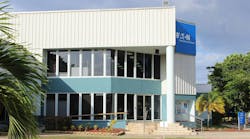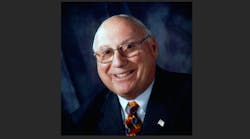The New York section of the Illuminating Engineering Society of North America (IESNA) recently staged Control This, an educational conference on the latest developments in lighting control and energy management. The event drew approximately 500 architects, lighting designers, engineers and technology professionals to a day-long conference at the Manhattan Pavilion in New York. In addition to more than 40 tabletop displays of lighting control manufacturers, the event had two educational tracks, each with three classes: construction and commissioning, and design concerns. The first track, which was moderated by Steve Mesh, a lighting consultant and educator, started with a three-hour workshop that allowed participants to wire the components of some control systems they usually only see as one-line diagrams. This workshop was a shorter version of a 50-hour course for electricians, called California Advanced Lighting Controls Training Program, for which Mesh has been one of the main developers and instructions (see www.calctp.org).
The second class, called “The Commissioning Process,” was given by Gary Meshberg, director of sales, Encelium Technology, N.J., a lighting controls manufacturer. He showed how to commission a lighting and control system to achieve maximum performance. The third class, called “A Life Cycle Cost Evaluation of Multiple Control Strategies,” was given by Dane Sanders and Darcie Chinnis of Clanton & Associates, Boulder, Colo. The presenters described the findings of a recently published study that answers the question: “What gives me the biggest control bang (energy savings) for my lighting control budget buck?”
The three design classes were: “Lighting Controls for Humans,” given by Michael Stiller, Michael Stiller Design, High Falls, N.Y., and Shoshanna Segal, Luminus Flux, New York, concentrated on how to communicate design intent to everyone involved in a project and how to get all the components to work together.
The second design class, called “Urban Green: Meeting the Green Code,” was given by Cheryl Massie, WSP Flack& Kurtz, New York, who looked at the four local laws that are part of the Greener, Greater Building Plan for New York City and the significance of light controls regarding these new regulations.
The third design class, called “Smart Cities: Interactive Urban Lighting,” was given by Pol Pla i Conesa and Susanne Seitinger, MIT Fluid Interfaces Group, Cambridge, Mass. They reviewed an interactive lighting installation, called Light Bridge, that involved people and sites on both sides of Boston's Charles River.
Lighting control is an important element for setting an energy strategy in the future, since these systems serve as a link to other controls in an automated demand response (ADR) system that tie a networked building to the smart grid. In turn, a networked office building, outfitted with sensors and controls, also allows occupancy sensors to turn lights on and off automatically, time scheduling to activate lighting circuits where occupancy sensors are not appropriate, task tuning to set light levels for a specific work area, daylight harvesting to adjust interior light levels according to available daylight, and software control for an occupant to set the light level over a desk.
A long-term goal of the U.S. Department of Energy is to achieve zero net energy in buildings in ten-year stages over a stretch of 30 years. Reaching this goal will require large efficiency improvements in building design and construction, energy conservation, reduction in allowable lumen-per-watt density and versatile lighting controls.








